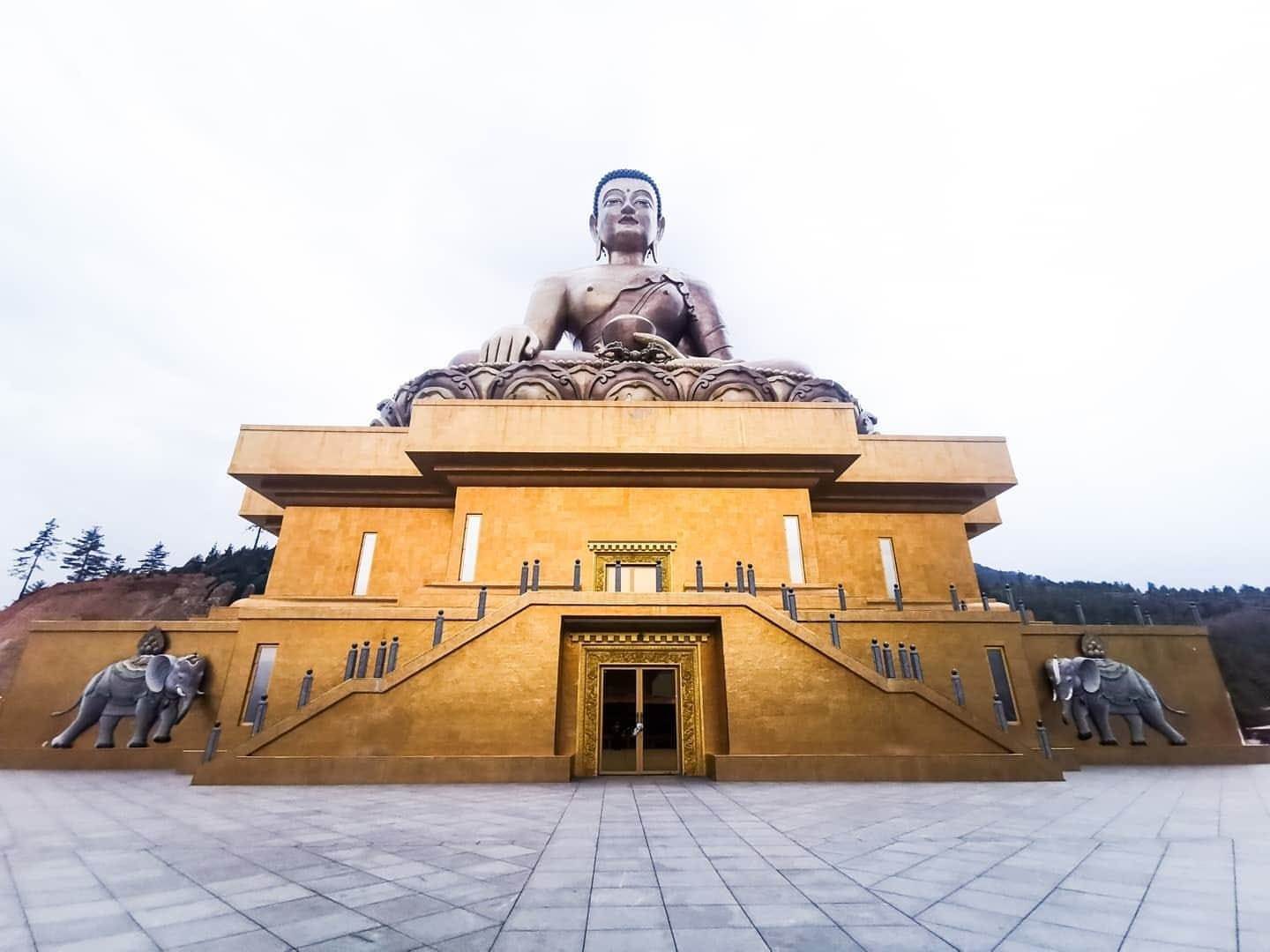
Buddha Point
Towering above Thimphu Valley from the tranquil Kuenselphodrang Nature Park, the majestic Buddha Dordenma is a sight to behold. Standing at a staggering 51.5 metres, this golden statue is one of the largest seated Buddhas in the world—and it’s not just its size that impresses. Nestled inside are over 100,000 smaller Buddha statues, each crafted with the same devotion and detail. More than a monument, the Buddha Dordenma is a symbol of indestructibility and spiritual awakening, believed to bless the land with peace and harmony.

Motithang Takin Preserve
Visiting the Motithang Takin Preserve in Thimphu is a delightful and serene experience—it’s the national animal’s very own sanctuary, nestled just 15–20 minutes from the city centre. What began as a humble mini-zoo became something far more fitting: a forested 3.4-hectare reserve where takin, Bhutan’s unique goat–cow creatures, have chosen to stay even when released into the wild. It’s a charming, low-key wildlife encounter that captures Bhutan’s gentle spirit—perfect for families, nature lovers, and anyone curious about the country’s living symbols.

National Memorial Chorten
Immerse yourself in the spiritual rhythm of Thimphu with a visit to the National Memorial Chorten, where locals—especially the elderly—gather daily to walk in prayerful circles, spinning prayer wheels and murmuring mantras in a peaceful flow of devotion. Built in 1974 to honour the beloved Third King, this white-washed stupa is a living sanctuary. Step inside and you’ll find vibrant murals, intricate mandalas, and detailed sculptures that beautifully illustrate Buddhist teachings. If you're seeking serenity or a glimpse into Bhutanese spiritual life, this is a place that quietly leaves a lasting impression.

Centenary Farmers' Market
Visiting the Centenary Farmers’ Market in Thimphu is a sensory delight and a peek into the everyday rhythm of Bhutanese life. Held every weekend, the market buzzes with energy—you’ll see locals mingling, laughter drifting through the air, and colourful stalls overflowing with fresh produce. Pick up crisp red apples, leafy greens, fragrant herbs, and seasonal vegetables, all grown by nearby farmers. There’s also an inviting food corner where you can sample hot momos, sweet orange slices, and freshly pressed fruit juices. Wander through the craft stalls, where artisans display hand-carved wooden utensils, woven baskets, and traditional textiles—perfect for unique souvenirs.
